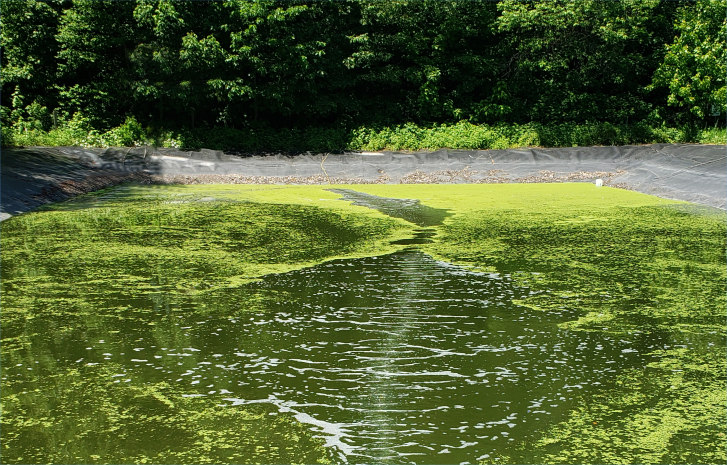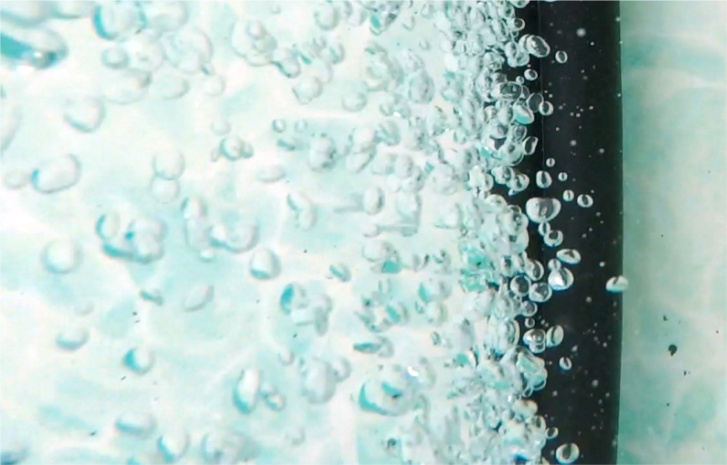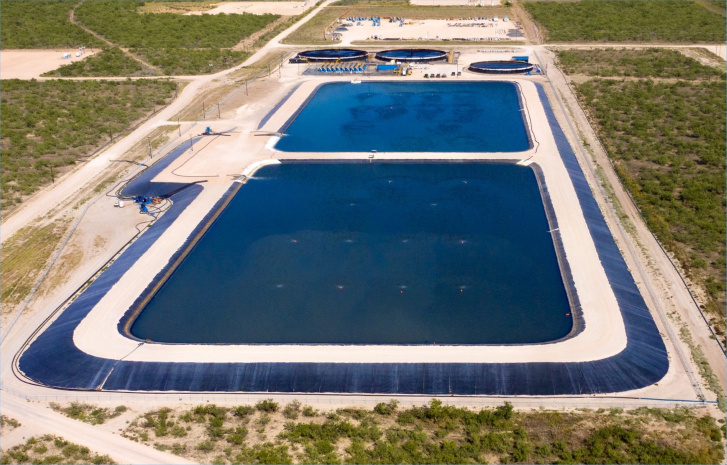How to Treat Glycol in Water Used for Airplane Deicing
In aeronautics, during frost and precipitation with a drop in temperature, de-icing of aircraft is crucial. Ice and frost particles can paralyze control surfaces (flaps, ailerons, etc.). It is also imperative to ensure that engine air intakes and various external sensors remain free of ice or snow. This is why de-icing must be carried out at ground level, because the higher the altitude, the lower the temperature and the less effective the de-icing agent.
The de-icing is generally done in 2 steps. First, a glycol-based de-icing fluid is sprayed to de-ice the equipment and remove the snow. Then a thicker anti-icing liquid is sprayed to delay the formation of ice or its accumulation according to its thicker texture. These 2 liquids are composed of ethylene glycol or propylene glycol. Once used to de-ice an aircraft, the glycol compound must then be directed to a containment system (e.g. aerated basin) to retain the liquid, so that it cannot infiltrate the ground or waterways. Although considered non-toxic, glycol has negative effects on the aquatic environment since its decomposition consumes oxygen (in the form of BOD5) to the detriment of living species in the environment.
What happens to the de-icing fluid used?
Each de-icing station is sloped to allow the used glycol to flow directly to special drains that are connected to an underground or open-air storage tank or pond.
The contents of these tanks are measured, analyzed and most of the glycol is recycled for the purpose of reusing these glycol compounds. Despite this reuse, some of the glycol is not recoverable and ends up in the site’s wastewater or stormwater. This BOD5-load in the water must be treated before being discharged to the environment or to the local city treatment system, if applicable. As mentioned above, this glycol pollutant is a biodegradable product that consumes large quantities of oxygen through its BOD5 and thus, if the tank is not sufficiently aerated, causes bad smells due to the anoxic or anaerobic conditions generated by the excessive consumption of air by the long carbon chains of the glycol compounds. The odors normally produced by the glycol biodegradation process under anaerobic conditions are made mainly of hydrogen sulfide (H2S) which is characteristic of a rotten egg smell. This unpleasant odor can cause complaints from nearby residents. You can read our complete article dedicated to H2S.

Several solutions are available to reduce/avoid the H2S production. The first goal is to reduce the presence of anaerobic sulfate-reducing bacterias which produce the dangerous H2S compound. Here are some methods to reduce the production of H2S:
1. Reduce what causes odors at the source. In the case of glycol compounds, adding extra aeration in the ponds where glycol residues are recovered will increase the efficiency of aerobic degradation and limit the formation of anaerobic bacteria responsible for the appearance of H2S and its characteristic odor.
2. The addition of aerobic bacteria such as BACTERIUS® PRO-H2S and BACTERIUS® PRO-WW allows to create a bioaugmentation and thus to promote the growth of aerobic bacteria not producing H2S contrary to the anaerobic bacteria of the sulphate-reducing type responsible for the unpleasant, toxic and corrosive odor.
3. For an increased efficiency to counter the growth of anaerobic bacteria and thus promote the domination of aerobic bacteria, a combined application of the two solutions is recommended. This would be the addition of aeration to permanently maintain a minimum concentration of dissolved oxygen of 2 mg/l in the contaminated water to be treated as well, the addition of specific and beneficial bacteria, allowing a growth of aerobic bacteria (giving a maximum efficiency and speed of increased degradation), without the presence of the unpleasant and harmful odor of hydrogen sulfide.

Examples of airport de-icing applications with H2S treatments generated by effluent treatment:
- In the fall of 2019, a western Canadian airport contacted us due to bad H2S odors in their de-icing liquid collection lagoons, prior to discharge to the municipal wastewater treatment system. In addition, the BOD5 regulation, prior to discharge, were not being met. Canadian Pond.ca Products Ltd. proposed the installation of an aeration system first, with the addition of bacterial products in a second phase, to address both issues simultaneously. The client went ahead with the aeration system, which solved the problem by eliminating the foul odors and lowering the BOD5 load to meet the city’s standard, before discharge to the municipal treatment system.
- In the fall of 2020, another airport in Western Canada contacted us with a similar problem. Following our suggestions for the addition of aeration and bacterial products, they decided to start with bacterial treatment and to add aeration in a second phase if required. The problem also seems to have been solved with this first step and would not require the addition of aeration at this time, but the option remains available if needed.
The lack of oxygen being the basis for the development of anaerobic bacteria, Bubble Tubing® aeration is a very fast and efficient solution for stopping the production of H2S. It allows the promotion and growth of aerobic bacteria naturally present in the medium to be treated or to grow the specific bacteria added during a dosage by bio-augmentation.
These aeration and bio-augmentation solutions, combined, increase your chances of success and speed! Our Bubble Tubing® product offers one of the best oxygen transfer rates observed on the market for efficient treatment of water bodies, thereby reducing the risk of H2S presence.
If this article interest you, please contact us to discuss your project.


